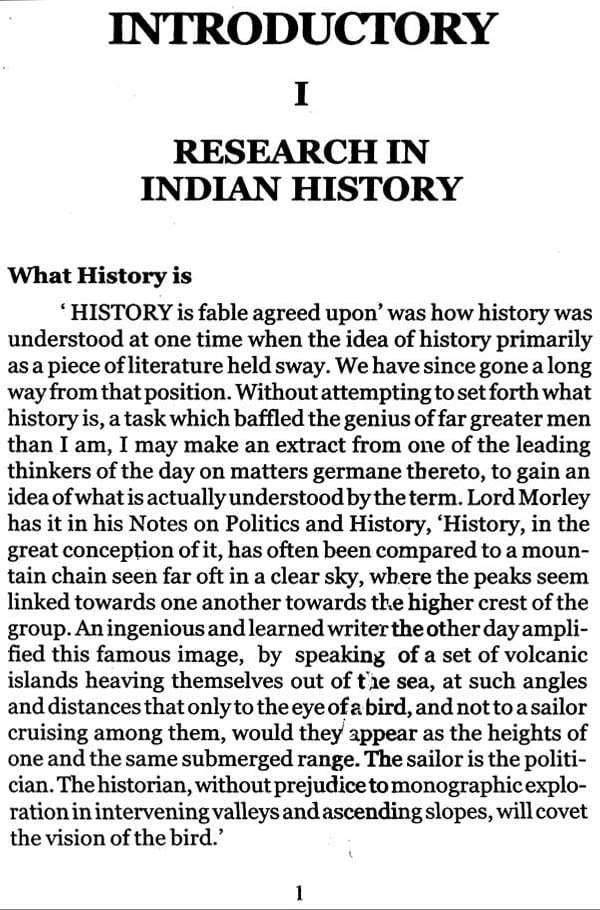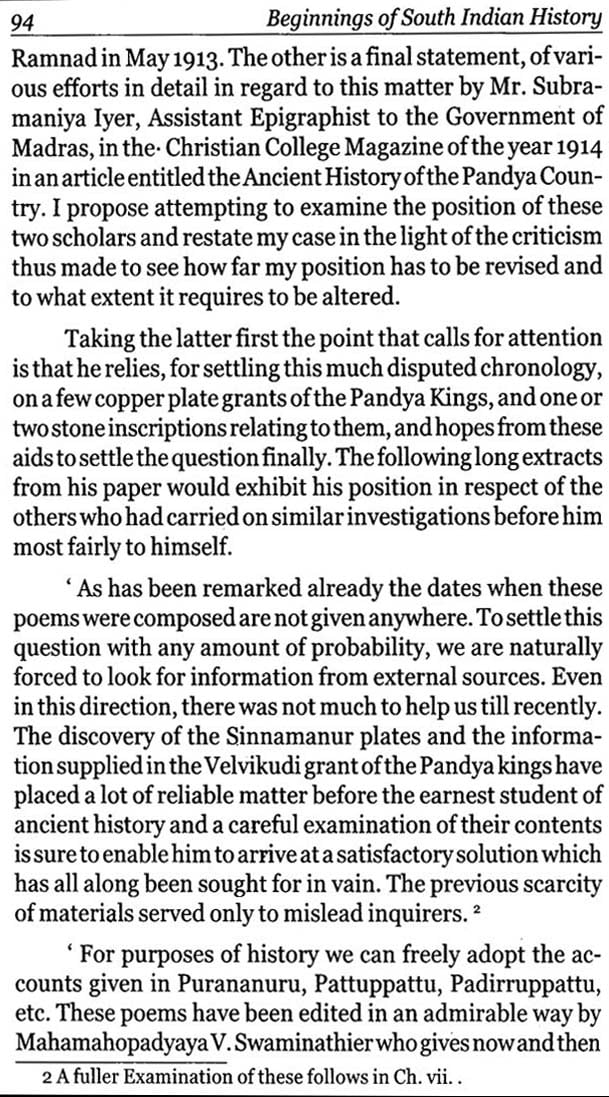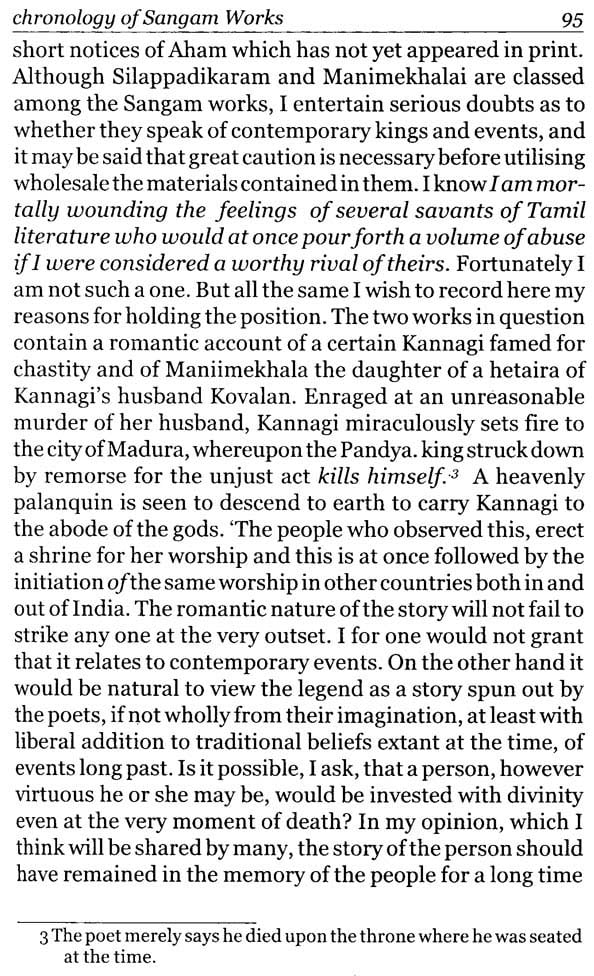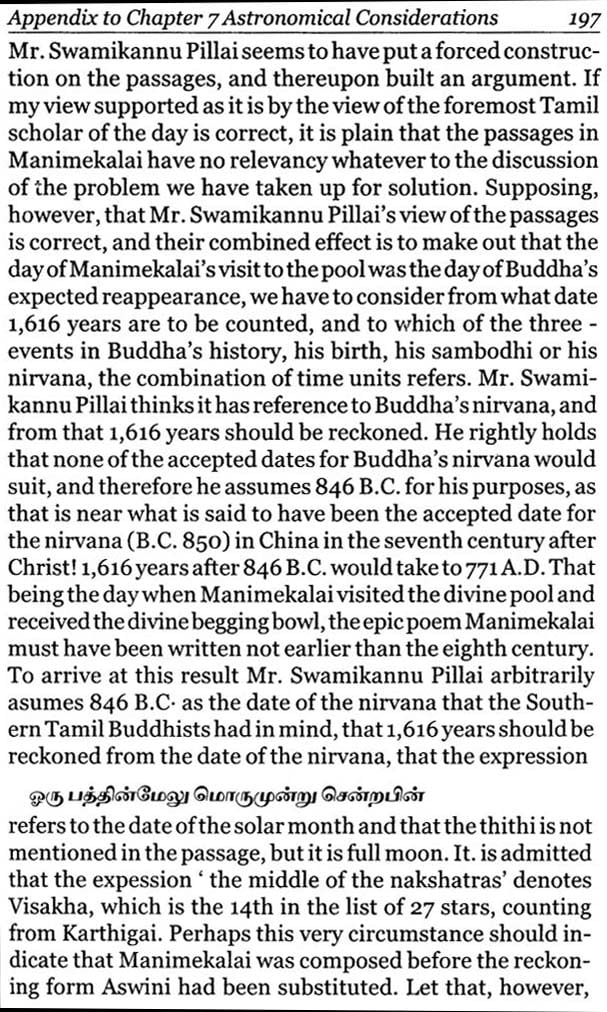
Beginnings of South Indian History
Book Specification
| Item Code: | NAO618 |
| Author: | S. Krishnaswamy Aiyengar |
| Publisher: | CBH Publications |
| Language: | English |
| Edition: | 2018 |
| ISBN: | 9789383811519 |
| Pages: | 212 |
| Cover: | Paperback |
| Other Details | 8.5 inch X 5.0 inch |
| Weight | 220 gm |
Book Description
This book makes detailed study of the Beginnings of the South Indian History based on the literary sources in Tamil classics and poets who contributed much to the history of the region beginning with the advent of the Christian era. The research sources for this study has been analyzed from the view point of Greek, Chinese, Arabian travelogues, Archeological inputs and Epigraphical sources. The historical input from literary sources in Sanskrit, Tamil, Kanarese and Telugu have been amply exemplified in the introduction. The period of the Asokan and Mauryan expansion forms the theme of the main theme of the chapter on the importance of the South Indian entity. The chronology of the Tamil classic have been made helpful in assessing the historical aspects of the period from advent of Christian era and related history of the period. How the rulers and chieftains had been the source for the successful growth of the Tamil Sangam have been applauded in the chronology. The advent of the Astronomical data elicited from the Tamil literary classic are an important addendum to these lectures and the inadvertent errors in eliciting them have been amply discussed. In the last chapter the genealogy of the Pandyan Kingdom have been discussed and how the literary, archeological and epigraphically sources have been helpful in reaching at this historical research.
The various lectures given by the Author at the Madras University forms the basis for this important historical research study.
The following pages contain the substance of the course of Special Lectures delivered before the University of Madras in January and February of this year. I have also included in this course by way of introduction, Two other lecture; the first of these was intended to be the inaugural lecture for the University and the second delivered on a previous occasion, both of them bearing directly on the subject of this course. In one or two cases, the lecture as delivered was revised to give it the necessary expansion to make it fuller. Otherwise the volume contains no more than the special course of lectures.
The sources of matter for these lectures have often been exploited by fits and starts, for various purposes on occasions by different writers. No one, however, made a constructive critical attempt to make these yield the results they were capable of, except the late Mr. Kanakasabhai Pillai of the Madras Postal Service. His work, giving as it does obvious evidence of great learning and considerable insight, still fell short in the essential particular that, each one of the sources tapped was not subjected to a detailed criticism in respect of its historical worth. Notwithstanding this defect it is monumental work which deserves better of the Tamil an though his conclusions may not all of them stand the test of time and criticism. Since his time we have advanced considerably, and most of the classic have been edited critically by Pundits’ who deserve public thanks for the labor and learning brought to bear upon the work. Improvements are certainly possible and will surely come if some interest is evinced in the results of that work. The names of Pandit Mahamahopadhyaya Swaminatha Aiyar of Madras, the late Pandit Binnattur Narayanaswami Aiyar of Kumbhakonam and Pandit Rangaswami Aiyangar of Vaniambadi deserve special mention in this connection. It gives me the greatest pleasure to acknowledge my obligation to their work. I should not forget, however, another laborers of an elder generation, the late Mr. C. W. Thamotharam Pillai to whose loving labours we are indebted for a number to Tamil works which otherwise would have been ordinarily inaccessible.
In regard to the late Mr. Kanakasabhai’s work, a criticism was fashionable that his work was patriotic. It was Johnson that said ‘Patriotism is the last resort of the scoundrel.’ This remark of the great Doctor may have let his patriotism get the better of his judgment on occasions. I have carefully tried to avoid laying myself open to such a heavy charge. My trouble has been the difficulty of making facts already known agree with those we may arrive at. This is a test not always applied in recent investigations and both the statement of fact so-called, and the suppressing of those that may be inconvenient, have in some cases gone together. I have tried scrupulously to avoid both, though both errors of omission and commission are possible. Too much has been attempted to be made of epigraphically evidence recently, and the late Mr. Venkayya’s name was quoted against me in the connection. I had known the late Mr. Venkyya for near a score of years before his lamented death, and I may even say that I am obliged to him for a part of true inspiration that ultimately led me to this field of work. Mr. Venkayya was in substantial agreement with me in regard to the general position, but he had his doubts as to the Silappadikaram and Manimekhalai being of the same age. I am almost certain that had be lived now, he would have accepted, the conclusions I have arrived at. I leave the reader to judge for himself in regard to these conclusions; all I wish to state here is that I have not allowed ‘patriotism’ to take command of evidence.
In regard to the evidence of this body of material, a few words may usefully be said here. The whole collection of literature that goes by the collective name ‘Sangam Work,’ is of the nature of anthologies with few exceptions. They were occasional poems, the objects of which were generally the celebration of the achievements of patrons. Having regard to this character of theirs they are sometimes very outspoken; but generally they sew a tendency to ‘add another hue unto the rainbow.’ It is, however, easily possible to allow for the panegyrist in the poet. These poems fall into two classis according to the conventions of Tamil Rhetoric. Those relating to the ‘field of action’ are direct and connect themselves with specific events and incidents in the life of the patron. Those ‘dealing with emotion, are less direct in regard to the points of reference, but they have to celebrate something connected with the achievements of the actual patron addressed or that of his ancestors. Judiciously used, the latter provide material as valuable as the former does. The only comparison possible in respect of these is the pre-Homeric lays or the baric tales of the days of chivalry in Europe, or even India. There are about twenty collections that will go into this class. Of these all but two of the more important have been printed. The others remain yet to be published.
In the use of this wealth of material, which undoubtedly is of the nature of contemporary evidence, what is required is such a general study as would give an idea of the ‘general lie of the land’ before specific use of the material is attempted. Much of the work that is generally done suffers from a want of this preliminary equipment. In the following pages I have had it before me all the time to avoid this. How far I have achieved success, it is not for me to say.
I take advantage of this preface to make clear two points in the work which seem ambiguous. On p. 48 Pinna Timma is referred to as the grandson of Ramaraja. This latter is likely to be understood as the Ramaraja who fell at Talikota. The next following sentences seem to confirm this impression. Both Pinna Timma and Rama of Talikota were alike grandsons of another Rama Raja, who served with distinction under Narasa and his son Vira-Narasimha. Pinna Timma and his brother Vittala were first cousins of Ramaraja, and conducted the expedition to the South and organized the Madura Province under Sadasiva and Ramaraja. The next point calling for remark here is on p.223 where the first sentence, beginning on this page, refers to the absence of mention of Pattini in the poem under discussion. It is quite likely that this was due to the fact that this poem was written before Senguttuvan northern invasion and the building of the temple of Pattini which came after the 50th years of his reign, when the others of his achievements discussed had become well known-(vide silappadikaram canto XXVII. II. 118-128 & II. 165-175).
I have the greatest pleasure here in acknowledging my obligations to the Syndicate of the Madras University for having sanctioned the expenses of copying for my use the Ahananuru manuscript in the Government Manuscripts Library; to Rae Sahib H. Krishna Sastrigal for his kindness in lending me the impressions and the office transcripts of two valuable Pandya grants: namely the Velvikkudi grant, and the larger Sinnamanur Plates; and to Pandit Maha. Swaminatha Aiyar for having been at the trouble to copy and supply me with two of the valuable poems in the collection from his excellently collated text of the Ahanamiru. I am equally obliged to Mr. M. K. Srinivasa Aiyangar, the Proprietor of the Modern Printing Works, for having cheerfully undertaken the publication of the work, and for having done it so well, putting the work through the Press in less than three weeks. Once of my research students Mr. N. R. Satanathan, B.A. (Hons.) took the trouble of preparing the index and the errata which it was found impossible to avoid owing to the rapidity with which the work went through the Press. I acknowledge with pleasure my indebtedness to him for these good offices.
| PAGE | ||
| Introductory | ||
| 1 | RESEARCH IN INDIA HISTORY | 1-18 |
| 2 | THE VALUE OF LITERATURE | 19-32 |
| Chapter 1 | South Indian a distinct entity | 33-45 |
| Chapter 2 | Mauryan invasion of South Indian | 46-59 |
| Chapter 3 | The Dawn of the Christian Era | 60-90 |
| Chapter 4 | Chronology of Tamil Litrature | 91-119 |
| Chapter 5 | The Age of Paranar | 120-136 |
| Chapter 6 | Talaiyalangnat-Tup-Pandyan | 137-162 |
| Chapter 7 | Astronomical Considerations | 163-188 |
| APPENDIX to Chapter 7 | 189-199 | |
| Astronomic considerations | 200-207 |











